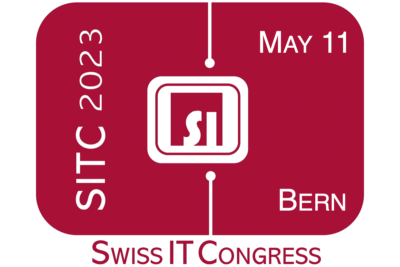Imagine yourself working for a thriving small to medium-sized enterprise or a compact corporation operating in fiercely competitive markets. Now, picture yourself in a dynamic brainstorming workshop, joined by fifteen top-level managers. The workshop commences with a free-flowing brainstorming session, where each participant envisions and shares their digital transformation ideas. These ideas are then grouped into transformation proposals in the next phase, followed by a strategic alignment of related proposals in the final step.

The big question arises: How many proposals and strategic options can we expect to emerge from this collaborative exercise? Assuming that all participants are digitally adept both in terms of using digital tools and grasping the transformative potential, you can anticipate a robust collection of around 50 proposals. Each manager will predominantly contribute ideas relevant to their respective areas of expertise or responsibility.
The consolidation of these ideas will result in a diverse array of proposals. It’s important to note that the exact number of proposals might vary depending on the workshop’s clustering culture. Some workshops may group disparate crowdsourcing options into one proposal, while others may not. Additionally, there might be an initial feasibility assessment, which can further influence the number of proposals. In an exceptionally open-minded setting, more than a hundred proposals could surface. However, in what we might consider a “typical case,” numerous proposals will ultimately coalesce into roughly a dozen viable strategic options.
Now, if your real-world experience significantly diverges from this ideal scenario, don’t be surprised; it’s the norm. Many Swiss companies encounter two primary hurdles. Firstly, their leadership often lacks a deep understanding of the potential inherent in digital transformation. Secondly, they tend to underestimate the high level of digital maturity achieved by leading global digital companies. Consequently, they evaluate the feasibility of transformation ideas based on what their internal IT infrastructure can manage, often excluding promising ideas before they even materialize.
You might ask whether it’s more prudent to align our aspirations with our IT department’s capabilities. The answer is a resounding no. Evidence suggests that the digital maturity of the IT department frequently corresponds to the digital acumen of business leaders. This acumen involves the ability to discern transformative digital opportunities, whether they already exist or can be realized.
Challenges Arising from Digital Literacy Gaps
The deficiency in digital acumen contributes to a myriad of challenges faced by Swiss companies, ranging from inefficiencies in the healthcare system to the sluggish implementation of innovations in public administration. These challenges are multifaceted:
- Leadership Training: Most leaders lack formal training in identifying digital opportunities, with only a few exceptions.
- Ecosystem Strategies: Many leaders lack the strategic expertise required to navigate complex ecosystem issues, particularly in government-related contexts.
- IT Maturity Awareness: There exists a widespread lack of awareness concerning the level of organizational IT maturity, hindering informed decision-making.
- Sense of Urgency: A palpable dearth of urgency pervades the domain of digital transformation, delaying essential progress.
- Meritocracy vs. Hierarchy: Tensions between meritocratic and hierarchical ideologies often result in power concentration and fragmented strategic thinking, impeding cohesive progress.
Insights from Academic Endeavors
Our insights into the state of knowledge within the industry are partially derived from implicit research. Our Master’s students, who frequently occupy pivotal roles in various industries, serve as a reliable representation of Switzerland’s young leadership. They grapple with challenges that are far beyond the capabilities of 98% of the Swiss workforce. Moreover, their Master’s theses serve as invaluable investigative tools. When students engage with industry experts, they sometimes encounter difficulties in comprehending the experts’ insights. Conversely, many of these experts lack novel ideas for digital transformation. While they excel in traditional business domains, they often falter when it comes to reimagining business through digital lenses. The common response to these challenges is the need for greater open-mindedness, which, while not incorrect, falls short of providing a comprehensive solution.
Distinguishing Fact from Fiction
In Switzerland, digital transformation is marred by persistent misconceptions. One prevalent misconception is the belief that technology is never a hindrance. This notion is unequivocally false. While, theoretically, technology poses few obstacles, it often presents substantial practical challenges in real-world applications. Ensuring data privacy, for instance, can be a costly and intricate endeavor. Another erroneous belief is that digital transformation should invariably begin from the bottom and that celebrating ignorance is virtuous. This perspective is fundamentally flawed. In contrast to fields like architecture or engineering, where professionals learn from past experiences, there is a growing trend in digital transformation to commence at the grassroots level. Regrettably, this approach, rather than leading to catastrophe, results in stagnation, relative inefficiency, and a gradual erosion of competitiveness. The consequences of these missteps will be borne by future generations unless corporate boards invest in continuous education on the critical subject of digital transformation.
Conclusion
Let’s start by addressing our primary focus: it should be the foremost responsibility of boards to educate themselves and their key executives in the realm of digital transformation possibilities. Without a culture of idea generation, there will be a lack of meaningful proposals and any digital transformation strategy formulated will lack true merit. Hence, an unwavering commitment to continuous learning and development is not just advisable but absolutely essential.
Disclaimer for Text Enhancement: The original English version of this text has undergone a two-step manual enhancement process with the assistance of ChatGPT. The initial suggestions from ChatGPT were first revised by the author and subsequently reviewed by the editor.
Disclaimer for Customized Continuing Education Services: The author has recently launched tailored continuing education services for corporations focusing on digital transformation. His inaugural client is a Swiss company boasting an impressive 8 billion Swiss francs in annual turnover. However, it’s important to note that the ideas presented here do not directly mirror the customized program. Customization inherently involves the fusion of a global perspective with the specific context and unique requirements of each individual customer.
Reinhard Riedl, MEng PhD, is a mathematician who focuses on transdisciplinary research combining computer science, business administration, law, political science, economics, psychology, sociology, and ethnology.










